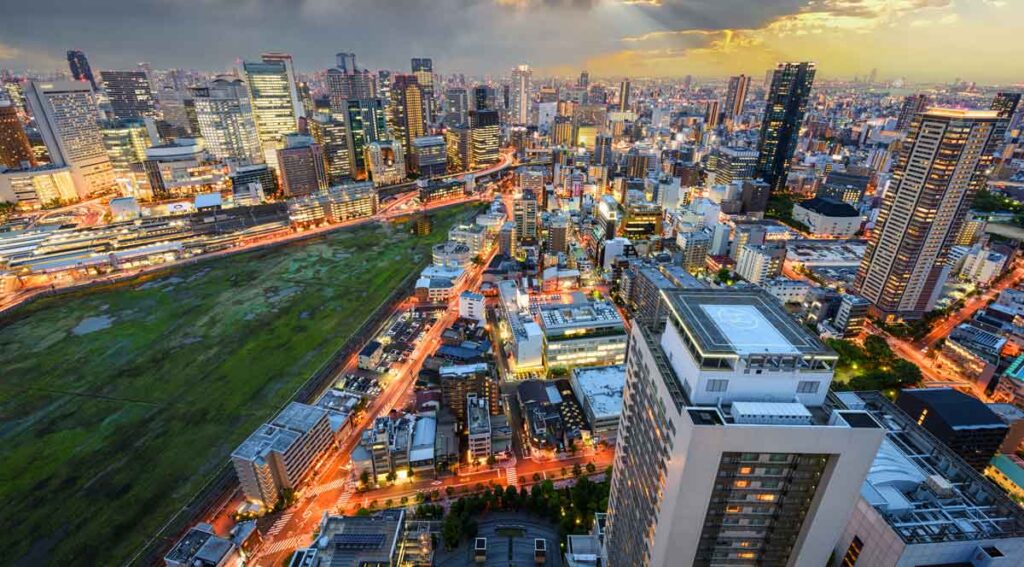HISTORY
History of Tokyo Japan
Hello, dear readers! Welcome to another exciting edition of my blog, where I share with you some fascinating facts and stories about the history of different places around the world. Today, we are going to explore the history of Tokyo, Japan’s capital and one of the most populous and vibrant cities on the planet. Are you ready to join me on this amazing journey? Let’s go!
Tokyo, as we know it today, is a modern metropolis that combines cutting-edge technology, ancient traditions, and diverse cultures. But did you know that Tokyo has a history that stretches back over 400 years? Yes, that’s right! Tokyo’s origins can be traced back to a small fishing village called Edo, which existed for centuries before it became the center of politics and culture in Japan.
The transformation of Edo into Tokyo began in 1603, when a powerful warlord named Tokugawa Ieyasu established his shogunate (military government) there. He chose Edo as his base because it was strategically located on the eastern coast of Honshu, the main island of Japan, and surrounded by water and mountains that provided natural defense. He also built a magnificent castle in Edo, which is now the site of the Tokyo Imperial Palace.
Tokugawa Ieyasu was the first of a long line of shoguns who ruled Japan for over 250 years, during a period known as the Edo period (1603-1868). Under their rule, Japan enjoyed peace and stability, but also isolation from the rest of the world. The shoguns imposed strict laws and regulations on the people, who were divided into four social classes: samurai (warriors), peasants, artisans, and merchants. The samurai were loyal to the shogun and served as his administrators and military officers. The peasants were the majority of the population and worked on farms and fields. The artisans were skilled craftsmen who produced goods such as pottery, textiles, and metalwork. The merchants were traders who engaged in commerce and finance.
The city of Edo grew rapidly during the Edo period, as more people moved there from other regions of Japan. By the mid-18th century, Edo had over one million inhabitants, making it one of the largest cities in the world at that time. Edo was also a cultural hub, where various forms of art and entertainment flourished. For example, Edo was the birthplace of kabuki (a type of theater), ukiyo-e (woodblock prints), and haiku (short poems). Edo was also famous for its festivals, fireworks, and street food.
However, life in Edo was not always easy or pleasant. The city suffered from frequent natural disasters, such as fires, earthquakes, and floods. The most devastating one was the Great Fire of Meireki in 1657, which destroyed most of the city and killed over 100,000 people. Another challenge was the social inequality and oppression that existed under the shogunate system. Many people were unhappy with their status and living conditions, and some rebelled against the authorities.
The end of the Edo period came in 1868, when a civil war broke out between the shogun’s supporters and his opponents, who wanted to restore the power of the emperor. The emperor’s side won the war, and he moved from Kyoto (the old capital) to Edo. He also renamed Edo as Tokyo, which means “eastern capital”. Thus, Tokyo became the new capital of Japan.
The following period was known as the Meiji period (1868-1912), when Japan underwent a rapid modernization and industrialization process. Tokyo was at the forefront of this transformation, as it adopted Western ideas and technologies. For instance, Tokyo built its first subway line in 1927, its first airport in 1931, and its first port in 1941. Tokyo also changed its appearance, as brick and stone buildings replaced wooden houses, and Western-style clothing replaced traditional attire.
The Meiji period was followed by the Taisho period (1912-1926) and the Showa period (1926-1989), which saw Tokyo’s continued growth and development, but also some challenges and hardships. In 1923, Tokyo was hit by another major earthquake, known as the Great Kanto Earthquake, which killed over 140,000 people and destroyed many buildings. In 1945, Tokyo was bombed by American planes during World War II, which caused widespread damage and casualties. After the war ended in 1945 Japan surrendered to America.
Tokyo recovered from these tragedies with remarkable resilience and determination. In 1964 Tokyo hosted its first Olympic Games which showcased its progress to the world. In 1978 Tokyo became a metropolis, which gave it more autonomy and responsibility. In 1989 Tokyo entered the Heisei period (1989-present), which is the current era of Japan. Tokyo has continued to grow and evolve, as it faces new challenges and opportunities in the 21st century.
Tokyo is a city that has a rich and diverse history, that reflects the history of Japan itself. Tokyo is a city that has witnessed many changes and transformations, but also preserved its traditions and identity. Tokyo is a city that has overcome many difficulties and disasters, but also achieved many successes and innovations. Tokyo is a city that has something for everyone, whether you are interested in history, culture, or entertainment. Tokyo is a city that I love, and I hope you do too!
Thank you for reading this blog post, and I hope you enjoyed learning about the history of Tokyo. If you have any comments or questions, please feel free to share them with me. And if you want to read more about the history of other places, please stay tuned for my next blog post. Until then, sayonara!

